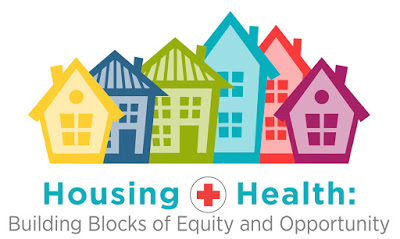 Whether we recognize it or not, we’re in a housing affordability crisis. Over a third of households in the U.S., carry a shelter burden that is beyond the standard of affordability – that is, costs usurp more than 30% of monthly income. Locally, rents have increased by 50% over the last 5 years and more startling, the number of evictions has grown by 90% in the last 3 years. Wages aren’t keeping up with costs. The tipping point of housing instability comes when there is a health crisis, loss of employment or reduction in hours, rent increase, expensive car repair, or any combination of these unanticipated or unwanted life events.
Whether we recognize it or not, we’re in a housing affordability crisis. Over a third of households in the U.S., carry a shelter burden that is beyond the standard of affordability – that is, costs usurp more than 30% of monthly income. Locally, rents have increased by 50% over the last 5 years and more startling, the number of evictions has grown by 90% in the last 3 years. Wages aren’t keeping up with costs. The tipping point of housing instability comes when there is a health crisis, loss of employment or reduction in hours, rent increase, expensive car repair, or any combination of these unanticipated or unwanted life events.
Why do I, a columnist usually sharing a perspective from my medical expertise, bring these statistics up? Because if we cannot provide an adequate supply of safe, affordable housing in this community, we are wasting time trying to reform health care.
Health care and other social services can improve life outcomes for individuals and families, but stable and affordable housing must be the platform where it begins. Research supports a critical link between affordable housing and health outcomes. In 2016, the Providence Center for Outcomes Research and Education found that health care costs were 12% lower after individuals moved into affordable housing; study subjects were 20% more likely to go see their primary care physician and 18% less likely to visit the emergency room.
The Olympic Region -which includes Kitsap County- leads the state in number of Medicaid patients visiting the Emergency Department unnecessarily. While the state average is 436.8 visits per 1000 patients, the average in the Olympic region is 617.6 per 1000, fully 41% higher.
Is this a result of poor-quality health care? No. We believe it is a direct result of food insecurity combined with a dearth of affordable housing in our community.
Affordable housing frees up financial resources for nutritious food, adequate clothing for growing bodies, and ultimately results in a healthier mothers and children – saving money for both the family and society in the long-term.
Critics say government-subsidized housing is detrimental to the economy and individual freedom. However, this column’s co-author, Kurt Wiest of Bremerton Housing Authority, and I have seen the lives of families literally transformed by obtaining a stable residence. We have also witnessed the fear on a child’s face when they are told they must sleep in a car one more night. We cannot impact the health of a child without placing it in the context of stable housing.
Affordable housing –where the cost of shelter is at or below 30% of household income– reduces family stress and related adverse childhood experiences (ACEs). Children who move frequently, are forced to double up in small living spaces, or face eviction can be traumatized by the experience. Studies demonstrate these children are more likely to suffer from mental health disorders, developmental delay, learning disabilities, and are hospitalized for illness more often. Children experiencing housing instability are four times more likely to be sick than their same-aged counterparts.
Well-constructed and maintained housing reduces the health problems by reducing the risk of overcrowding and in turn, decreasing the spread of infectious diseases. In Kitsap County, there are many families living in homes overrun with mold, dust mites, or rodents. Those without the option of affordable housing often face substandard living situations with increased risks of accidental injury to children. Affordable housing can improve health outcomes for those with chronic disease simply by providing a consistent environment in which to deliver health care.
Finally, affordable housing allows women and children to leave abusive situations. Domestic violence is one of the leading causes of homelessness for women and their children. The rate of women returning to their abusers is inversely correlated with the availability of affordable housing. Adverse childhood experiences, such as physical or emotional abuse, have life-long impact on health and life expectancy.
The gap between survival and self-sufficiency continues to widen. The federal poverty line for a family of 4 is $24,600, however, “self-sufficiency” in Kitsap County during 2017 required $59,075. The average monthly rent in Kitsap County is now $1,350. To meet the 30% threshold, a householder must earn nearly $25 per hour, working 40 hours a week, 52 weeks a year.
For those adults with children working minimum wage jobs, public supports, such as child care assistance and federally subsidized housing, can help families meet their basic needs. If we are to make a difference in the health of individuals and families in Kitsap County, we must address the supply of safe, decent, and affordable housing. Health outcomes and housing stability are inexorably connected. Without investing in affordable housing first, quality health care that’s available to all is just a pipe dream.